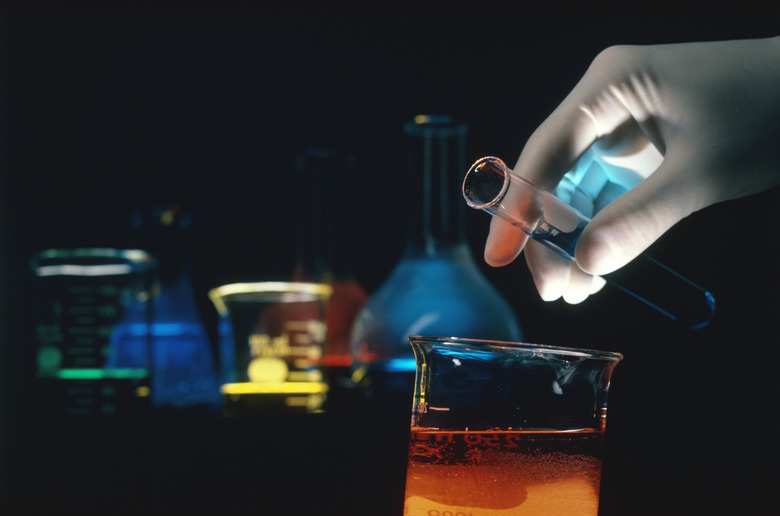Steps In Finding Percent Yield
In chemistry, percent yield is a way of gauging the completeness of a reaction. Percent yield compares the actual yield of a compound in a reaction to the theoretical yield of that compound. The theoretical yield assumes that all of the limiting reagent was consumed in a compound. In other words, the reaction took place completely. You must divide the grams of your actual yield by the grams of the theoretical yield and multiply by 100 in order to obtain percent yield.
Determine the Limiting Reagent
Step 1
Calculate the molar mass of all the compounds in the chemical reaction. The molar mass is the sum of the atomic mass of each atom in a compound. For example, the molar mass of water is 18 grams: 2 grams of hydrogen plus 16 grams of oxygen.
Step 2
Divide the grams of the compounds by their molar masses. This will give you the number of moles of each compound in the experiment. For example, if you initially used 36 grams of water, 36 divided by 18 grams per mole yields 2 moles of water.
Step 3
Compare the moles of reactants in your experiment to the theoretical number of moles. For example, consider the chemical reaction 2F2 + 2H2O => 4HF + O2, in which "F" is fluorine, "HF" is hydrogen fluoride and "O2" is oxygen. In this case, you want equal moles of F2 and H2O. If you have 2 moles of H2O and 2.3 moles of F2, however, you have more than enough F2 to complete the reaction. Hence, H20 is the limiting reagent.
Calculating Percent Yield
Step 1
Calculate the theoretically expected number of moles of the product based on your limiting reagent. For example, for 2 moles of H2O in the previously described reaction, you should expect 4 moles of HF.
Step 2
Multiply the expected moles of the product by its molar mass. For example, the molar mass of HF is 20 grams. Therefore, if you expect 4 moles of HF, the theoretical yield is 80 grams.
Step 3
Divide the actual yield of the product by the theoretical yield and multiply by 100. For example, suppose you only ended up with 60 grams of HF as a result of your experiment. This actual yield of 60 grams divided by the theoretical yield of 80 grams equals 0.75. Multiplying by 100 results in a percent yield of 75 percent.
Things Needed
- Scale
- Periodic table
Cite This Article
MLA
Murmson, Serm. "Steps In Finding Percent Yield" sciencing.com, https://www.sciencing.com/steps-finding-percent-yield-8760/. 24 April 2017.
APA
Murmson, Serm. (2017, April 24). Steps In Finding Percent Yield. sciencing.com. Retrieved from https://www.sciencing.com/steps-finding-percent-yield-8760/
Chicago
Murmson, Serm. Steps In Finding Percent Yield last modified August 30, 2022. https://www.sciencing.com/steps-finding-percent-yield-8760/
